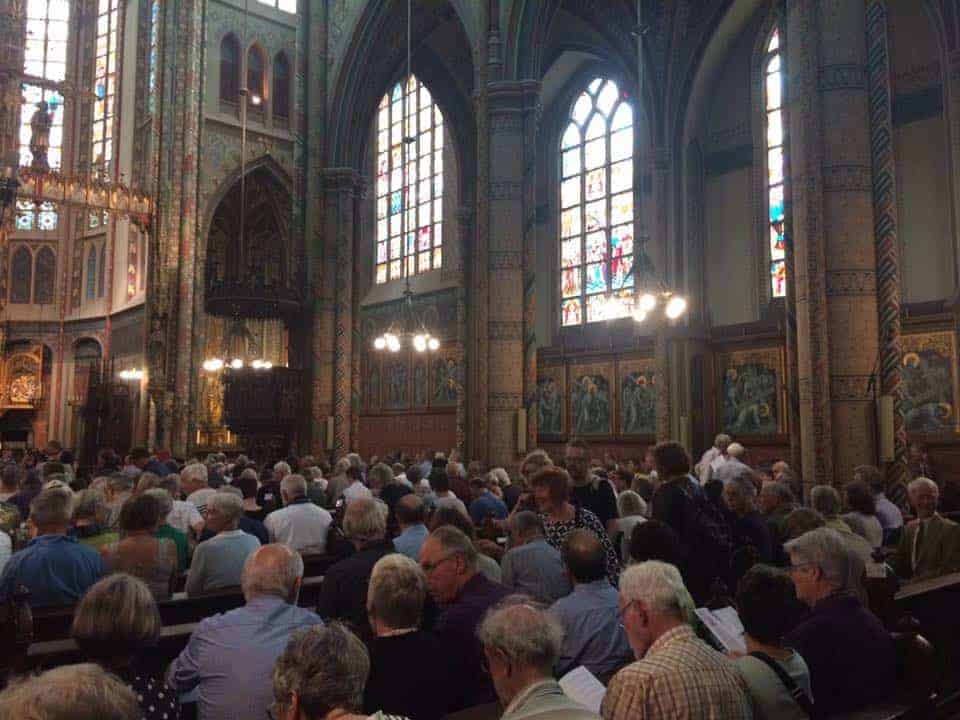“For centuries Venice was politically and economically one of the most important centers of Europe, which led to a multitude of relations, for instance to the East and its dominant Byzantine culture. Due to political developments residents of eastern areas also settled in Venice, including Greeks who took their own version of the Christian faith and the accompanying liturgy with them. Cappella Romana, directed by Alexander Lingas, sang a programme with chants in Latin and in Byzantine Greek that in terms of pronunciation is more akin to modern Greek then to its classical version. The programme was divided into four chapters: Crucifixion and Deposition, Resurrection, Eucharist Songs and Hymns to the Mother of God. It revealed both the similarities and the differences. A striking feature of the Byzantine hymns are the long melisma’s which explains that pieces on a rather short text still can take quite much time. The last part of the programme included a passage with a vocalise on “terererere”; these meaningless syllables are termed teretismata and make their appearance in Byzantine manuscripts since the 14th century. Such a passage may actually be extended or shortened at will. This repertoire is particularly fascinating and largely unknown. Cappella Romana has specialized in this kind of music and recently released a CD with liturgical music from Cyprus. The style of singing is somewhat reminiscent of that of sacred music in the Russian Orthodox tradition, with an important role for the lower voices. In this concert women also participated but their role was relatively limited. The acoustics of the St Willibrordkerk was perfect for this repertoire. The performances of the Cappella Romana were extremely impressive.” —Johan van Veen, musica Dei donum
Utrecht Early Music Festival Review
Categories:
Tags:


You must be logged in to post a comment.